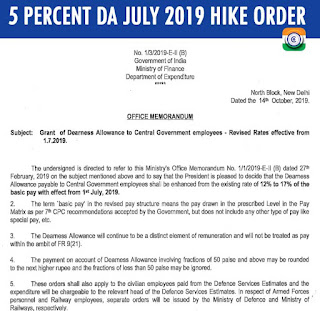Seventh Pay Commission must rationalise India’s obese and unwieldy bureaucracy
The
Seventh Pay Panel report should press for the rationalisation of
government salaries and making bureaucracy leaner and more efficient.
The
four-member Seventh Central Pay Commission, led by former Supreme Court
Justice Ashok Kumar Mathur, will soon come up with its recommendations
to determine a salary structure for central government employees. As
always, the salary structure is supposed to be linked to “the need to
attract the most suitable talent to government service, promote
efficiency, accountability and responsibility in the work culture, and
foster excellence in the public governance system”.
Salaries in
government must perforce be benchmarked to the income of the general
population as also those of private sector employees. According to a
World Bank survey, the average salary of a government employee in the UK
during 1995-2000 was £19,000 per year – 1.4 times the average income of
British citizens. This ratio was 1.0 in Indonesia, 1.2 in China, 1.4 in
the US, 1.5 in South Korea and so on. The average annual income of
government employees in India on the other hand was as much as 4.8 times
the average income of the Indian citizen.
A disproportionately
liberal remuneration package in comparison with the private sector
generates an unhealthy clamour for government jobs and distorts the
labour market. The bureaucracy also enjoys a plethora of perks such as
residential bungalows, cars, a retinue of personal staff and so on, all
of which put additional burden on the state exchequer.
An obese
and unwieldy bureaucracy is the single most pernicious malady afflicting
governance. It clogs the channels of communication, leads to delays,
diffusion of responsibility, and spiralling costs. Foreign investors
find it harrowing to do business in India on account of what Arun
Shourie calls multiple silos in which ministries function, thereby
creating a sclerotic system.
Thanks to regular cadre restructures
and inter-service competition, the bureaucracy has seen a steady
expansion. In 1947 the number of secretariat departments at the Centre
was 18. Today, the number of Secretary level officials is over 150.
There are as many Additional Secretaries or equivalent, not to speak of a
battalion of Joint Secretaries. The authorised IAS cadre strength now
exceeds 6,150 – up from 1,230 in 1951.
In the corporate world
slimming a workforce by a tenth of its size is standard practice. Why
shouldn’t governments do it too if needed? Sweden and Canada have done
it and yet managed to retain effective public services. In 1993 then US
President Bill Clinton had laid out a blueprint aiming at reducing the
federal work force by 2,52,000, designed to bring about a savings of
$108 billion over a five-year period.
Recommendations of the Fifth
Central Pay Commission (CPC-V) had included a 30% reduction in
government jobs over a period of 10 years; reduction of the number of
Secretary level posts from 90 to 30; abolishing 3,50,000 vacant posts;
pruning the current five to six administrative layers to not more than
two; functional multi-tasking and so on. But these recommendations got a
quiet burial.
The Indian state today has a lopsided staff
structure. Ninety-five per cent of its employees belong to categories
‘C’ and ‘D’. In most states, almost three-fourths of all government
employees are parasitical support staff such as peons, chowkidars,
drivers and clerks. Nothing has really happened on CPC-VI’s
recommendation to phase out Group ‘D’ staff, most of whom are unskilled
and sometimes even illiterate.
Government today needs more
specialists, fewer generalists. Several senior positions can be better
filled by short-term contracts, enabling lateral entry of technocrats,
professionals and entrepreneurs to supplement and strengthen a system
dominated by the general elite.
Pay panels impose no small burden
on the country’s finances. The central fiscal deficit under the impact
of CPC-VI jumped from 2.5% in 2007-08 to 6.5% in 2009-10. Post-CPC-V,
the annual wage bill of central government employees rose from Rs 21,885
crore in 1996-97 to Rs 43,568 crore in 1999-2000. Likewise, state
governments’ expenditure on salaries increased from Rs 51,548 crore to
Rs 89,813 crore during the same period, compelling 13 states to seek
central help to pay staff salaries.
Again, post CPC-VI, and
between 2007-08 and 2013-14, the annual wage bill of central employees
more than doubled to Rs 1,15,000 crore. The wage bill of government
staff in the states jumped to Rs 2,86,000 crore from Rs 1,36,000 crore. A
World Bank study revealed that “employees have effectively captured
control over state spending in health and education, and diverted most
of it to themselves through salaries, with negative consequences for
service delivery”.
While the aam admi – the peasant, the stone
breaker, the daily wage earner, the rural landless, the urban slum
dweller – toils, these entitled babus take their place in government for
granted. No hearts should bleed for privileged government employees
battening on their inflation-indexed dearness allowance installments.
Is the Seventh Central Pay Commission listening?
The writer is former Managing Director, Container Corporation of India
Blog Times of India







